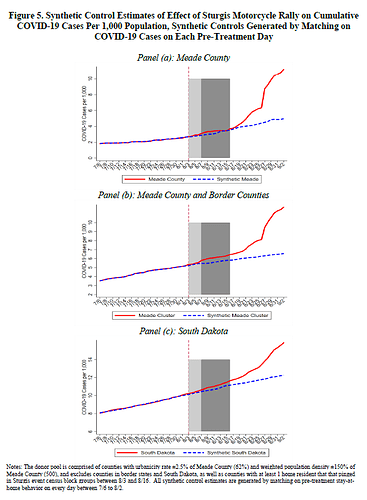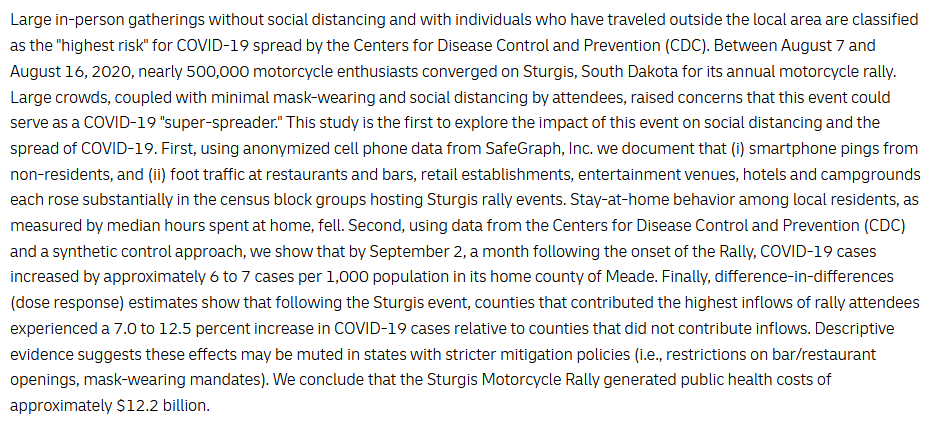I love math models. The way I read it, they used phone data to develop a model to track people around Sturgis, and then developed a model to correlate the phone model to the CDC test data.
The developed a “Synthetic control”? Does that mean we don’t need Randomized Controlled Tests any more? Is this the new gold standard? No pesky, expensive, control groups, just create one in the computer. Riii…ght. IOW, we have no reason to know that the blue curves wouldn’t have become the red curves without Sturgis happening at all because it’s not a controlled experiment. It’s association.
I think you’re exactly right @gme and would bow in your direction if I knew what direction that was.
I would make that last line “45 year old bikers, 4th graders or false positives.”
A statistician whom I read points out that the word case probably doesn’t mean what most people think. When we read “case” we think of someone who got the disease; what it almost always means in this context is someone who has tested positive with one of the available tests. I went through the paper looking to see what they meant and it doesn’t mention which tests were used. They say they used CDC data which could be several tests (as I understand it). Some tests have false positive rates around 90% (some of the Polymerase Chain Reaction, PCR, tests). It’s pretty much impossible to know what really went on.
I’m suspicious, but I worked in a field where the best and most expensive models got you close enough to make things work with enough blood, sweat and tears.



